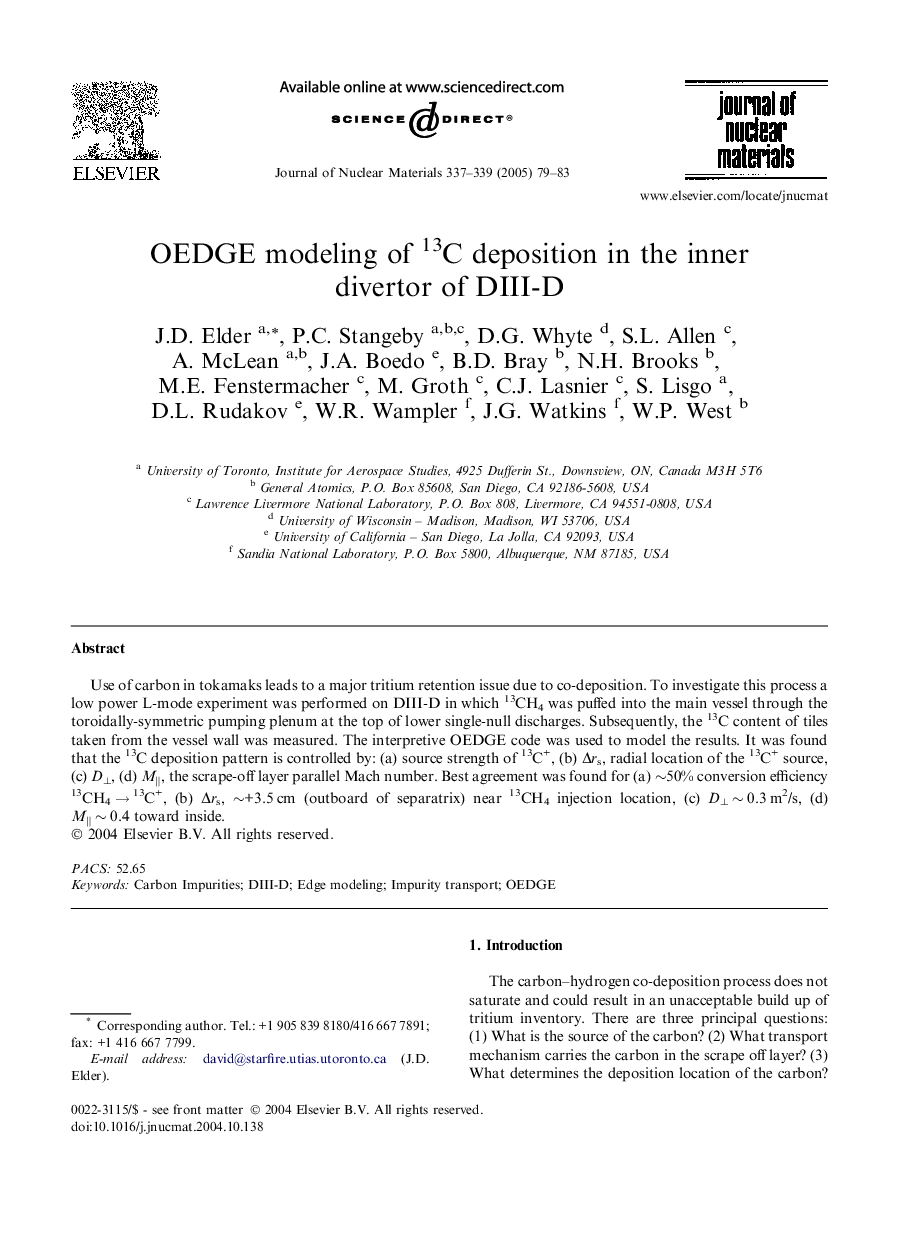| Article ID | Journal | Published Year | Pages | File Type |
|---|---|---|---|---|
| 9793819 | Journal of Nuclear Materials | 2005 | 5 Pages |
Abstract
Use of carbon in tokamaks leads to a major tritium retention issue due to co-deposition. To investigate this process a low power L-mode experiment was performed on DIII-D in which 13CH4 was puffed into the main vessel through the toroidally-symmetric pumping plenum at the top of lower single-null discharges. Subsequently, the 13C content of tiles taken from the vessel wall was measured. The interpretive OEDGE code was used to model the results. It was found that the 13C deposition pattern is controlled by: (a) source strength of 13C+, (b) Îrs, radial location of the 13C+ source, (c) Dâ¥, (d) Mâ¥, the scrape-off layer parallel Mach number. Best agreement was found for (a) â¼50% conversion efficiency 13CH4 â 13C+, (b) Îrs, â¼+3.5 cm (outboard of separatrix) near 13CH4 injection location, (c) Dâ¥Â â¼Â 0.3 m2/s, (d) Mâ¥Â â¼Â 0.4 toward inside.
Related Topics
Physical Sciences and Engineering
Energy
Nuclear Energy and Engineering
Authors
J.D. Elder, P.C. Stangeby, D.G. Whyte, S.L. Allen, A. McLean, J.A. Boedo, B.D. Bray, N.H. Brooks, M.E. Fenstermacher, M. Groth, C.J. Lasnier, S. Lisgo, D.L. Rudakov, W.R. Wampler, J.G. Watkins, W.P. West,
